This blog series (this is Part II) is designed to help you become more familiar and comfortable with Dimension Types and Analytical Dimensions in Enterprise Management. There is great information in the Online help center. Your business partners and Sage Professional Service consultants are your resources for setup design and strategy.
What next?
- Before we go any further, remember to thoroughly vet any new setup or changes in your test environment before applying to production. This means testing imports, data entry, 3rd party integrations, reports, inquiries, customizations, screen/window appearance, GL postings, etc. Don’t assume changes will work – test. Doing thorough testing before moving into production holds true outside of adding dimensions. Testing will save you hours of aggravation later.
What happened to the dimension types and analytical dimensions I added?
- So, you’ve added the Dimension Types under Setup, Organizational Structure. The Dimensions were entered under Common Data, G/L accounting tables, Analytical. But, now you don’t see the Dimension types on any screens. You’re also thinking, “By the way, I don’t want to use them everywhere, is that OK?”
- There is still more setup to do to get the dimensions on the screen. Let’s look at what else needs to be done.
Ledgers
- What Dimension types do we want to use on each Ledger?
- Remember: we can create up to 20 Dimensions types per GL account, but we can only use up to 9 per Ledger.
- We don't have to setup all 20 Dimension types or use all 9 on every Ledger
- After you’ve decided how many Dimension types to use and which ones, head to Setup, Organizational structure, Ledger and the CoA and dimension types block.
- No. of dim types determines how many dimension types you are going to use on that Ledger and the number of dimension type boxes that will be available for entry.
- If you select 6, boxes for Dimension type 7, Dimension type 8 and Dimension type 9 will be grayed out.
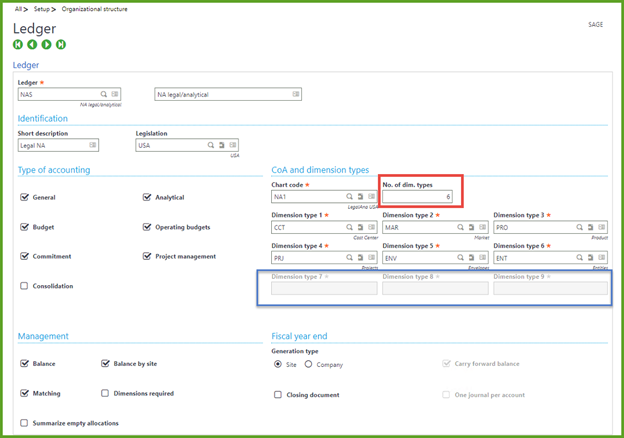
- It is alright to use a Dimension type on more than one Ledger even if they don’t share the same account core module.
- The Company inherits its Dimension types from the Ledger as do the Sites.
Default Dimension Types
- The Default Dimension Types function is found under Setup, Organizational structure. It is used to create the Dimension types that will be automatically loaded into the database records (customers, suppliers, products, etc.)
- Select the Object from the Left list (customers, suppliers, products, etc.)
- Select the Dimension types that you would like to use with that object
- You don’t have to use all the Dimension Types on every Object.
- You may have Dimension Types for different ledgers on the same Object. Objects are shared across ledgers.
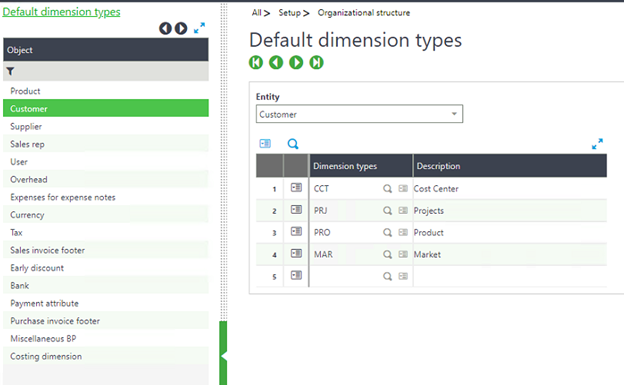
- Here is how the Dimension Types appears on the BP Customer’s Financial tab. Note that you cannot delete or add to the Dimension Types on the Customer's screen or on any Object's screen.
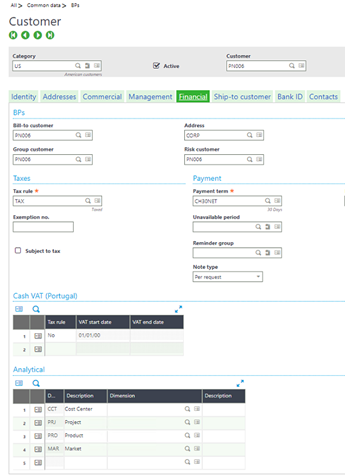
Dimension Types on G/L Accounts and Journal Entries
- Dimension types are assigned to Accounts on the Analytical tab under Common Data, G/L Accounting tables, General.
- We can have up to 20 Dimension types on a G/L account or we can elect to have no Dimensions types on an account.
- Some setups will only have Dimensions types on revenue and expense accounts or just certain expense accounts. It is a matter of each company’s reporting requirements.
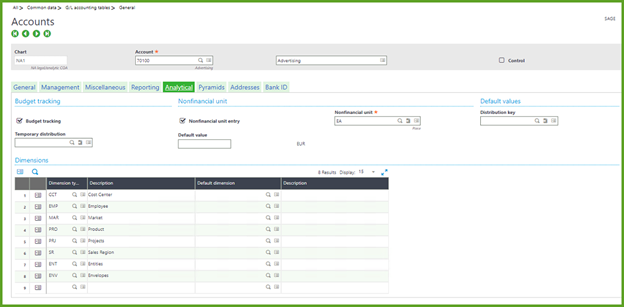
- When we look at a Journal Entry under Financials, Journals, the lines will display the Dimension types based on the selected Site.
- Note the popup view of the Journal Entry line for account 70100 doesn’t include the EMP and SR Dimension types because they are not assigned to Site NA012.
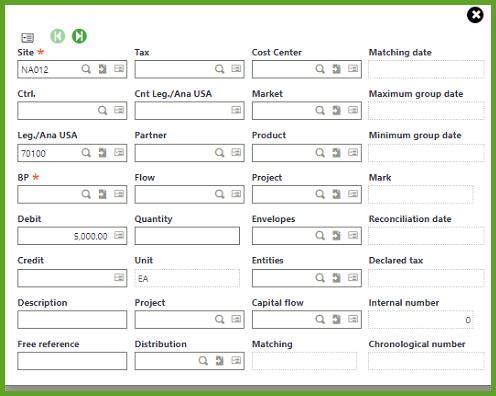
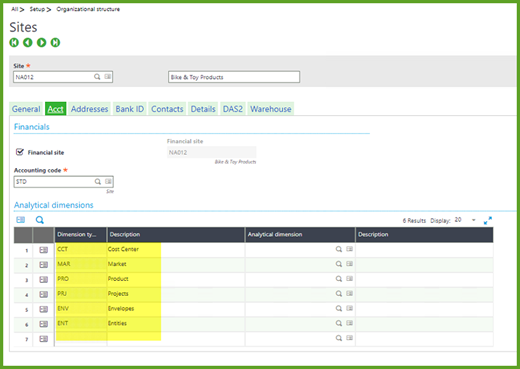
- If a Dimension type is not assigned to a G/L account, the field will be visible in the JE line, but you will not be able to enter an Analytical Dimension value in the field. As you do data entry and tab through, the cursor will skip over these unassigned Dimension Type fields. You cannot force a dimension value into the field if the Dimension type has not been assigned to the G/L account.
- You can have a mix on the Journal Entry line where accounts are assigned to various Dimension types.
In our next installment, we will look at Default dimensions and Mandatory dimensions


Top Comments